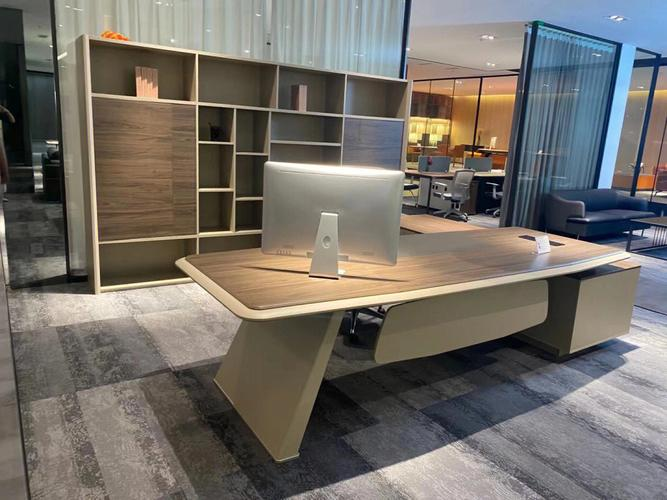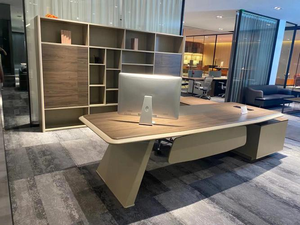
Office Furniture Inspection Methods and Standards Guide Inspection, Audit and Factory Certification Services
Office furniture is specialized equipment provided for daily work and social activities, and its quality directly affects safety, comfort, and durability in use. With the continuous upgrading of China's furniture industry, office furniture has also become increasingly specialized in terms of production technology, category segmentation, and quality management. To ensure that the product quality meets national standards and customer requirements, a systematic inspection process and factory inspection review mechanism must be established. This article, in combination with the classification of office furniture, will detail the inspection methods, inspection standards, and quality control points, providing practical references for purchasers, quality inspectors, and production enterprises.
I. Classification of Office Furniture and Quality Considerations
(1) Classification by Style
Modern Style: Emphasizes functionality and simple lines, commonly seen in open-plan office environments
European Classic Style: The carvings are intricate and the shapes are complex. During the inspection process, attention should be paid to the details of the carvings and the uniformity of the paint surface.
American-style furniture: With an imposing structure, the key aspects to be inspected include the stability of the wood and the quality of the finish.
Chinese classical style: Emphasizes the use of mortise and tenon joints and solid wood materials. It requires strict testing of the moisture content and structural strength of the wood.
Neoclassical style: Combines traditional and modern elements, and needs to balance both the appearance of the decorative surface and its practical performance.
(2) Classification by Material
Solid wood furniture: The key points of inspection include the type of wood, moisture content (required to be ≤ 16%), dead knots, cracks, and other defects.
Panel furniture: Focus on the formaldehyde emission level of the panels (must comply with GB 18580), the quality of edge sealing and the load-bearing performance.
Soft furniture (such as office chairs): Durability tests, stuffing inspection and flame retardancy assessment are required.
Metal furniture: Inspection of weld point quality, electroplating layer thickness and rust prevention treatment
Composite materials such as steel-wood, glass, and marble: Comprehensive inspection must be conducted in accordance with standards for multiple materials.
II. Inspection Standards and Inspection Procedures for Office Furniture
(1) Main Quality Standards Basis
QB/T 1951.1—1994 Quality Inspection and Evaluation of Wooden Furniture
QB/T 1951.2—1994 Quality Inspection and Evaluation of Metal Furniture
GB 18580-2017 Limit on Formaldehyde Emission of Interior Decoration and Furnishing Materials
GB/T 3324-2017 General Technical Conditions for Wooden Furniture
Enterprise technical specifications and procurement order requirements
(2) Key items for factory inspection and audit Quality Management System
Does it have ISO 9001 quality system certification?
Are the records of incoming material inspection (IQC), process inspection (IPQC) and final product inspection (FQC) complete?
Material compliance
Wood, panels, paints and adhesives must provide third-party environmental testing reports (such as for formaldehyde and heavy metal content)
Leather and fabrics need to pass the tests for wear resistance and color fastness.
Production process control
Moisture content monitoring, hot pressing process parameters, environmental control in the painting workshop
Verification of installation accuracy of hardware components and strength of embedded parts
III. Contents and Methods of Finished Product Inspection
1. Appearance Quality Inspection
Surface defects: No dead knots, tree bark, scratches, depressions, blistering of the paint film, etc. are allowed.
Finishing requirements: Gap ≤ 1mm. The veneer should be firmly attached without any floating or wrinkling. The color difference of the paint should be consistent with the color chart.
Testing tools: color difference meter, glossimeter, defect limit samples
Sampling standard: Sampling inspection is usually conducted according to AQL 1.0/2.5 (Major/Minor)
2. Structure and Performance Testing
Stability Test: Conduct an inclination test on table-like and cabinet-like items (e.g., no tipping when inclined at 30°)
Load testing: The desktop load capacity should be ≥ 20kg. The tabletop needs to withstand a load of 100kg; the drawers must pass repeated pulling tests.
Connection strength: Check whether the mortise and tenon, screw connection parts are firmly attached, and whether the hardware components operate smoothly without any noise.
Safety assessment: Sharp corners are rounded off; glass components need to be tempered; office chairs need to undergo safety tests for casters and air rods.
3. Dimension and Symmetry Check
Use measuring tools such as rulers and calipers to verify the consistency of product dimensions with the drawings.
The verticality of the cabinet body and the symmetry deviation of the door panels must comply with the GB/T 3324 standard.
IV. Packaging, Labeling and Document Review
1. Packaging Requirements
The product should be shrink-wrapped to prevent moisture and have inner packaging padded with pearl cotton or corner protectors.
The outer box should be suitable for transportation conditions and should be protected from bumps and deformation.
2. Identification and Documents
The product labels should indicate the material, specifications, applicable standards, and manufacturer information.
Qualified certificates, material inspection reports and installation instructions need to be provided.
3. Inspection Document Records
The inspection report should include the sample quantity, defect classification, measurement data and on-site photos.
For serious defects (Major), a non-conformity report must be issued and rectification is required.
V. Summary
The quality control of office furniture should cover the entire process from design, material selection, production to shipment. By strictly adhering to national standards and factory inspection requirements, combined with appearance inspection, structural testing and document review, the consistency of product quality can be effectively improved. It is recommended that purchasers hold pre-production meetings, mid-process inspections and pre-shipment inspections before large-scale production, and establish a long-term quality tracking mechanism with suppliers to ensure that office furniture meets all requirements in terms of practicality, safety and environmental protection.
Share this product

Office Furniture Inspection Methods and Standards Guide Inspection, Au
Office furniture is specialized equipment designed for daily work and social activities. Its quality directly affects safety, comfort and durability in use.
